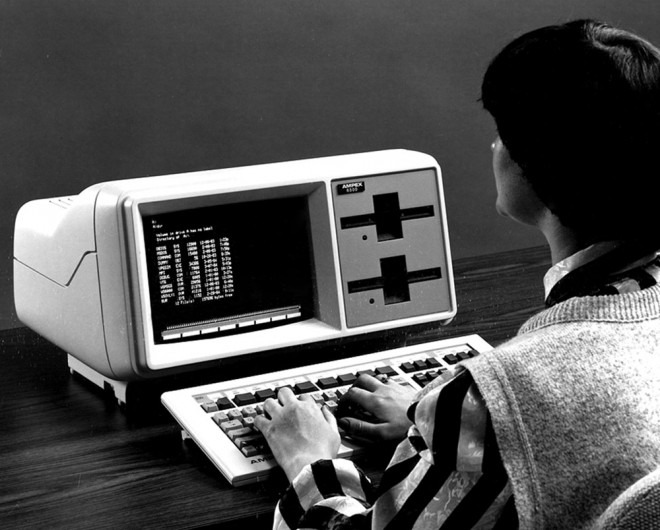Photo: Rexhep-bunjaku/Wikimedia Commons
Microsoft just released the source code of one of its most important computer operating systems. The catch is that the software is over 30 years old.
Yesterday, with permission from Microsoft, Silicon Valley’s Computer History Museum published thesource code for MS-DOS, the text-based operating system that ran so many personal computers in the ’80s and turned Microsoft into one of the industry’s dominant software companies. For computer geeks, the move can provide a bit of fun — a glimpse into how software was built in the past — and it provides a nice metaphor for a Microsoft that’s evolving with the times. Microsoft was once vehemently opposed to open source software, believing that it would cut into its core business, but in a modern world where open source is so very important, the company is changing its tune.
But the company shouldn’t stop at symbolic gestures. We love that the MS-DOS code is now available to the world at large (even if you can’t distribute your own changes to it, as with truly open source software). And we love that Microsoft has also released the code behind another seminal piece of software: Microsoft Word for Windows, originally released in 1990. But if the company is to regain its place at the head of the tech table, it needs to start open sourcing operating systems that are used today, not 30 years ago. Microsoft needs to open up the Windows Phone mobile OS — and maybe even desktop Windows.
Google already gives away both the source code and the licenses for its Android and Chrome operating systems, and that strategy has been quite successful in stealing market share from Apple and Blackberry. Especially in the developing world, handset makers are flocking to Android, and there’s little reason for them to pay a fee for Windows Phone.
There’s even reason to consider extending this policy to the desktop. Apple long ago open sourced thefoundation of its OS X operating system through a project called Darwin, and now, it gives away new versions of the operating system to existing customers. Microsoft licenses Windows Phone to manufacturers for as little as $10 per device, and desktop versions of Windows may sell for even less than that. As the price of operating systems approaches zero, Microsoft is running out of excuses not to open up its operating systems. Plus, this could give the company added currency among the world’s software developers — something it desperately needs.
Trust the Source
Releasing source code resonates on so many different levels. It helps software spread. And it accelerates the pace of innovation. But it also engenders an added trust in the companies and individuals doing the open sourcing, a trust that spreads among developers as well as users. People are often more likely to use and build on top of software if they can see into the source code. The history of MS-DOS can actually provide a window into this phenomenon.
Microsoft started out as a company that sold tools for programmers. But tiny outfit got its big break in 1980 when IBM asked for help building an operating system for its new desktop PC line. The result was MS-DOS. It was hugely successful, but a cloud has hung over it from the very beginning. For years a man named Gary Kildall claimed that parts of Microsoft’s operating systems were copied from an OS he built at a tiny company called Digital Research Inc.
The questions that plagued Microsoft during its early years could have been resolved long ago had it simply published its source code under the same license it did today. Rivals wouldn’t be able to use it in their own products, but curious parties could have decided for themselves just how closely Redmond mimicked Kildall’s work.
In similar fashion, Microsoft could help answer lingering questions about Windows. Rumors about NSA backdoors into Microsoft products have swirled since at least 1999, and trust in Microsoft and other large tech companies has only eroded since Edward Snowden leaked a large cache of documents showing the breadth and depth of NSA spying. Microsoft could help clear this up by publishing the full source code of its modern operating systems — even if it’s under a very restrictive license.
Microsoft Does Android?
According to reports, Microsoft is already looking to license certain Windows operating systems at no charge. This is different from open sourcing. But it’s a start. And through Nokia, the handset maker it’s acquiring for $7 billion, Microsoft may even build low-cost phones with Android, the poster child for how successful an open source OS can be.
Now the question is whether Microsoft will go so far as to emulate Android with its own OSes. Yes, Microsoft would lose a revenue stream, but first and foremost, it needs to ensure that Windows is widely used. This will not only encourage developers to build software to the platform — something that will lead to even wider use. It will provide a widely used platform for all sorts of other Microsoft software and services as well as ads. That’s how Google makes it work.
You may see open source DOS as a novelty. But it provides the seeds for a new Microsoft.
via http://www.wired.com/



